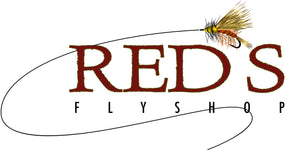CALL NOW (509) 933-2300
CALL NOW (509) 933-2300

As you begin to generate a longer, straighter, and more efficient cast you'll need to consider bringing the fly back alongside you, rather than up overhead. In a fly cast it's absolutely critical that we eliminate slack. To do this, a backcast plane that brings the fly back alongside you rather than up overhead can really help. You'll snag the fly on your rod tip less, and your line will have fewer mid-air collisions which often result in those pesky "wind knots".
The goal of any caster is to remain "connected" to their fly with some constant tension on the rod tip. Fly rods love tension. These casts feel better, are more predictable, and more efficient. Constant pressure during the fly cast is the goal here along with a back casts that shoots back to terminal distance, doesn't leave any slack in the line, and makes the forward casts a cinch!
Be sure that this adjustment is subtle, don't over do it with dry flies. Keeping your back cast and forward casting planes as parallel as possible is the goal, with just enough of an off set to let the fly clear your rod and body. With weighted flies like streamers, double nymph rigs, or sink tips, experienced anglers often use a more exaggerated path in order to keep those weighted flies organized and out of trouble. A harsh "stop and start" cadence with weighted flies is harsh, obtuse, and sends bad vibrations down the rod. Plus its very inefficient.
Check out the video, and consider this idea on your next outing.
